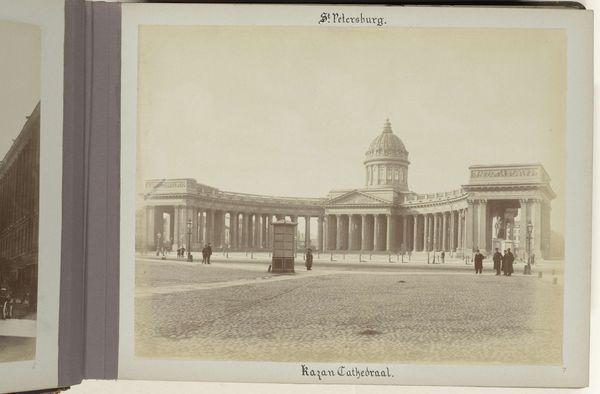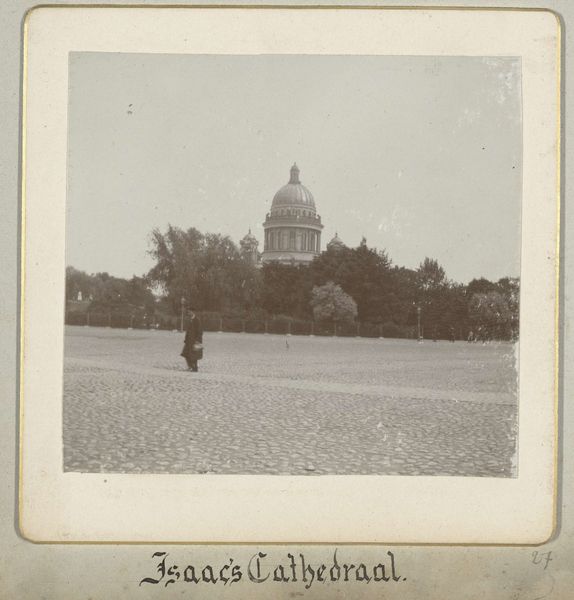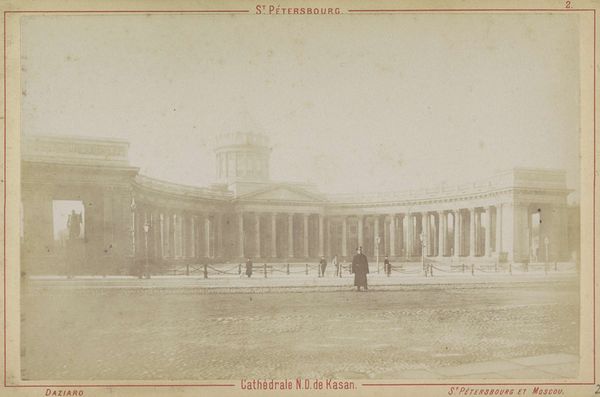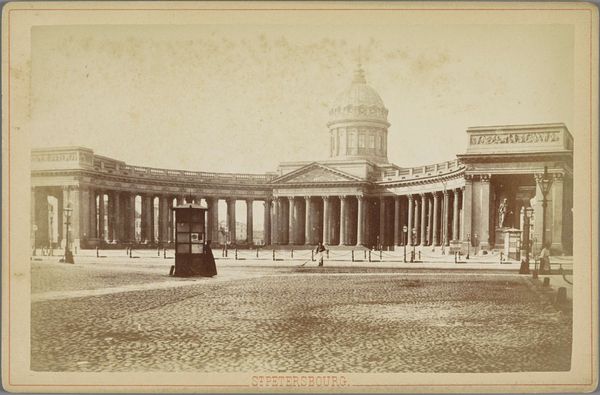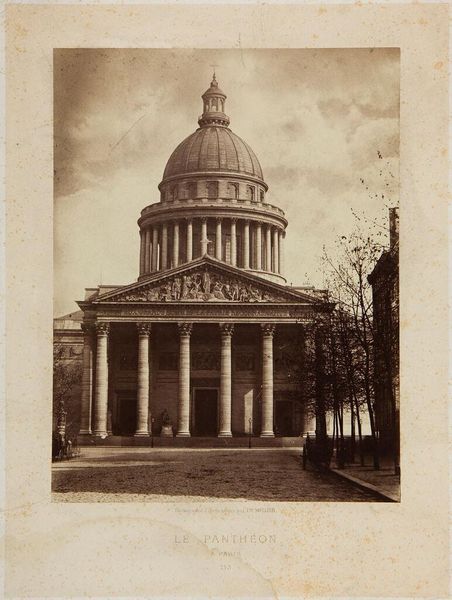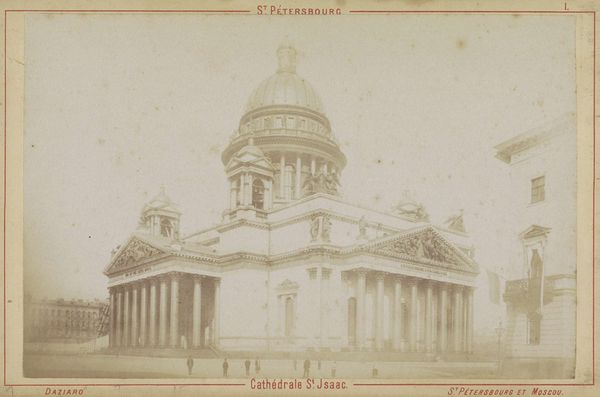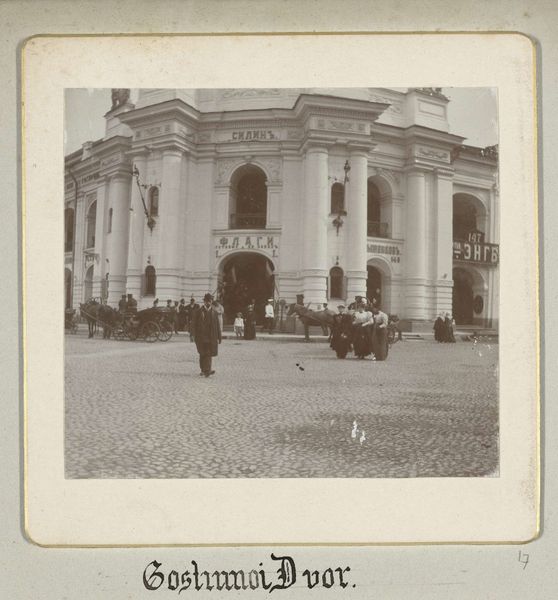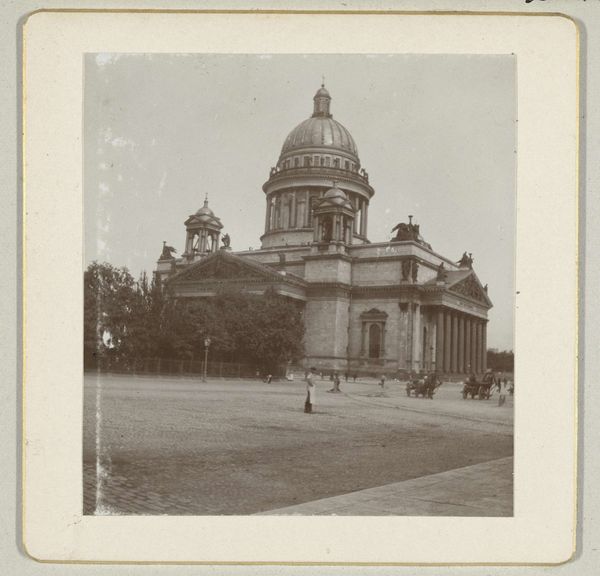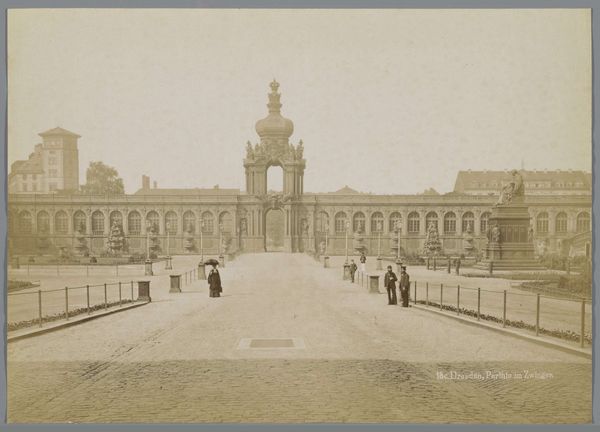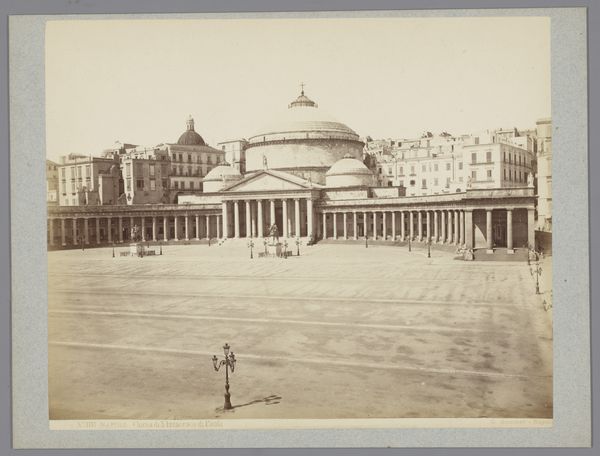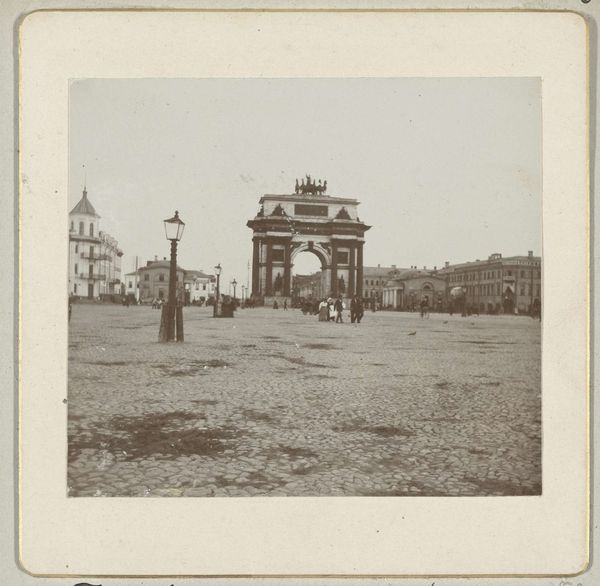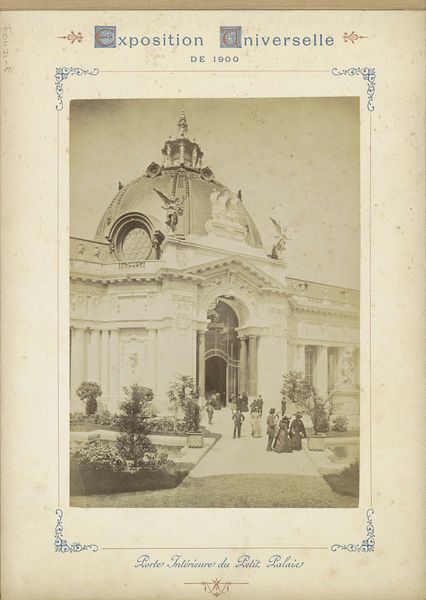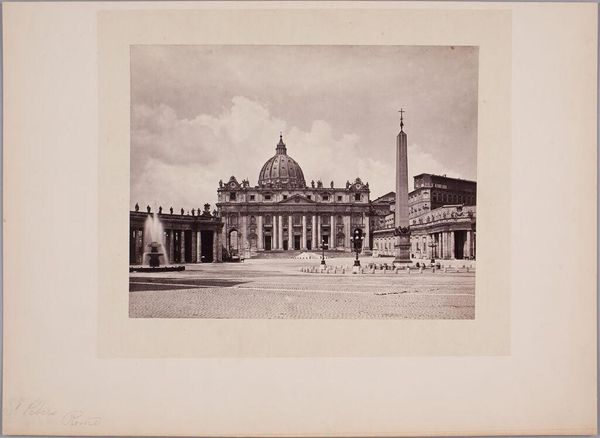
Kazankathedraal, een ontwerp naar de Sint Pieter in Sint-Petersburg 1898
photography, architecture
landscape
photography
photojournalism
19th century
architecture
Dimensions: height 100 mm, width 100 mm, height 259 mm, width 365 mm
Copyright: Rijks Museum: Open Domain
Curator: Looking at this 1898 photograph, attributed to Henry Pauw van Wieldrecht, showing the Kazankathedraal – a design referencing St. Peter's Basilica in St. Petersburg. My first impression is of somber grandeur. Editor: It is grandiose. You can almost feel the chill in the air just by observing the monochrome composition, the endless paved area, and imposing stonework of the cathedral’s facade, don't you think? I wonder what kind of stone was sourced to erect that imposing frontispiece. Curator: That chill is part of its story. The photograph serves as both landscape and document, situating the cathedral within the evolving urban fabric of Russia at the close of the 19th Century. This connects strongly to an established lineage of photojournalism, highlighting specific architectural spaces and their significance to urban identity. Editor: Exactly. The public space, meticulously captured through photography – then a relatively new technology – demonstrates how visual culture started mediating how people perceived urban landscapes and religious institutions. I imagine accessing visual documentation of such locations was only attainable by those with political and monetary clout. Curator: Indeed. I also find myself focusing on the labor required to bring that architectural space into being – transporting materials, carving stones, erecting scaffolding – this photo doesn’t shy away from reminding us that buildings and artworks like this rely on labor. Editor: Very true. Thinking about this, the photographic process itself involved specific labour - the photographer's eye, the developing chemicals, the printing paper. Considering the era, printing these images may have been subject to certain gatekeeping practices given how this technology was slowly entering civilian use at the time. Curator: Absolutely. Thinking of that process makes me consider the photograph's capacity to disseminate ideas about Russia in the Netherlands, shaping a particular socio-political understanding. This piece in the Rijksmuseum then provides evidence to the flow of these ideas between groups and nations at the time. Editor: It is so revealing of a particular moment. This conversation leaves me reflecting on the materiality and technological impact embedded in photography.
Comments
No comments
Be the first to comment and join the conversation on the ultimate creative platform.
